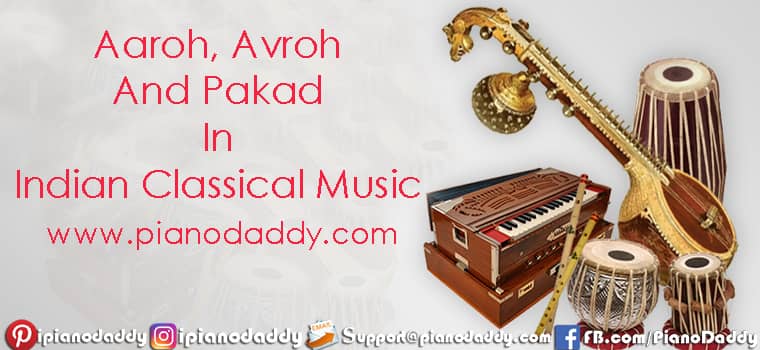Aaroh, Avroh And Pakad In Indian Classical Music
Instructions: Sign (k) = Komal Swar, (t) = Teevra Swar, Small Alphabets = Lower Octave, Capital Alphabets = Higher Octave. See Harmonium Theory Click Here Key Name details with diagram.
Aaroh, Avroh And Pakad In Indian Classical Music
In Indian classical music, the terms “Aaroh”, “Avroh” and “Pakad” are used to describe specific aspects of a raga’s melodic structure. Let’s explore each of these terms:
Aaroh: Aaroh, also known as Arohana, refers to the ascending sequence of notes in a raga. It represents the melodic ascent or the scale of the raga. Aaroh specifies the order and progression of the notes used while ascending the scale. For example, in Raag Yaman, the Aaroh would typically be “Sa Re Ga Ma Pa Dha Ni Sa”, indicating the ascending order of the notes.
Avroh: Avroh, also known as Avarohana, is the opposite of Aaroh. It denotes the descending sequence of notes in a raga. It represents the melodic descent or the reverse scale of the raga. Avroh specifies the order and progression of the notes used while descending the scale. Using the example of Raag Yaman, the Avroh would typically be “Sa Ni Dha Pa Ma Ga Re Sa”, indicating the descending order of the notes.
Pakad: Pakad refers to the characteristic melodic pattern or motif that is associated with a particular raga. It is a concise and distinctive musical phrase that captures the essence of the raga. The pakad is often repeated and elaborated upon during a performance, serving as a recognizable and defining feature of the raga. It helps in identifying and differentiating one raga from another. Each raga has its own unique pakad. In the case of Raag Yaman, a common pakad is “Ni Re Ga, Ga Ma Ga Re Sa”, which showcases the key melodic movements of the raga.
These terms are essential in understanding and communicating the melodic structure and identity of a raga in Indian classical music. Musicians use them as guidelines while performing and improvising within a particular raga to maintain its essence and distinguish it from other ragas.


